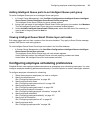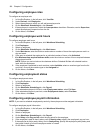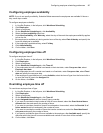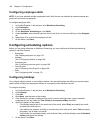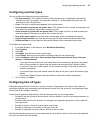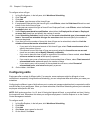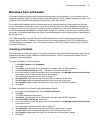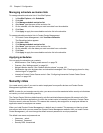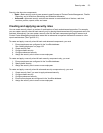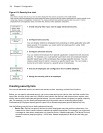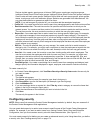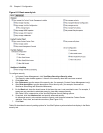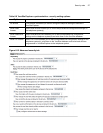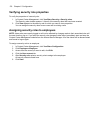Security roles 173
Security roles have two components:
• Basic—Basic security controls user access to specific areas of Contact Center Management, Flexible
Reporting, and to Workforce Scheduling and Schedule Adherence.
• Advanced—Advanced security controls user access to customized lists of devices, real-time
monitors, profiles, reports, sites, and users.
Creating and applying security roles
You can create security roles in a number of combinations of basic and advanced properties. For example,
you can create a security role with basic security only by leaving the advanced security components set to Not
restricted. Alternatively, you can create a security role with the basic component granting full access to all
Contact Center Management application areas and an advanced component that restricts access to a few
reports and devices. (See Figure 6-10.)
To create and apply a security role with basic and advanced components, you must
1. Ensure employees are configured in the YourSite database.
See “Adding employees” on page 132.
2. Create security lists.
3. Configure basic security.
4. Configure advanced security.
5. Assign the security role to one or more employees.
To create and apply a security role with basic security components only, you must
1. Ensure employees are configured in the YourSite database.
2. Specify basic security.
3. Assign the security role to one or more employees.
To create and apply a security role with advanced security components only, you must
1. Create security lists if you want to apply advanced security.
2. Configure basic security.
3. Configure advanced security.
4. Ensure all employees are configured in the YourSite database.
5. Assign the security role to one or more employees.



